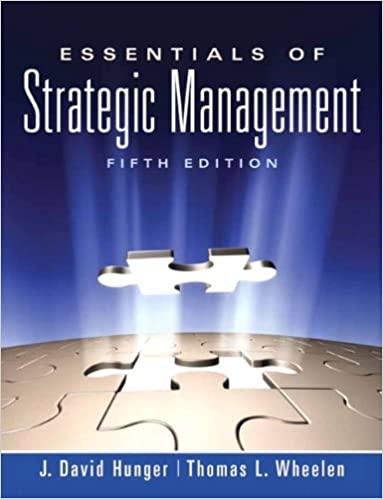Question
Nike | Spreading Out to Win the Race Nike is indisputably a giant in the athletics industry. But the Oregon company has reached the top
Nike | Spreading Out to Win the Race
Nike is indisputably a giant in the athletics industry. But the Oregon company has reached the top by knowing how to stay small. Nike has managed to become an industry leader by focusing on core competenciesand outsourcing other tasks and functions. But can it stay out in front?
Where's the Company
If you don't make anything, what do you actually do? It's not a joke or a Buddhist riddle. Rather, it's a conundrum about one of the most successful companies in the worldNike. The company is known worldwide for its products, none of which it actually makes. But if you outsource everything, what's left? The answer, for starters, is a whole lot of brand recognition.
Since captivating the shoe-buying public in the early 1980s with legendary spokesperson Michael Jordan (who has made an estimated $1.3 billion endorsing the brand), Nike continues to outpace the athletic shoe competition while spreading its brand through an ever-widening universe of sports equipment, apparel, and paraphernalia. The ever-present Swoosh graces everything from bumper stickers to sunglasses to amateur sports uniforms. Nike products embody a love of sport, discipline, ambition, practice, and other athletic traits.
Outsourcing Wins the Race
Nike has cleverly kept its advertising agency nestled close to home, but has relied extensively on outsourcing many nonexecutive and back-office responsibilities to reduce overhead. The firm is structured around its core competency in product designnot manufacturing. But Nike has taken outsourcing to a new level, with subcontractors producing all of its shoes. Although this hasn't hurt product quality, it has challenged Nike's reputation for social responsibility.
In a move designed to turn critics into converts, Nike has posted information on its website detailing every one of the hundreds of factories that it uses to make shoes, apparel, and other sporting goods. It released the data in conjunction with a comprehensive corporate responsibility report summarizing the environmental impact and the labour situations of its contract factories.
Jordan Isn't Forever
Banking on the star power of its Swoosh, Nike has successfully branded apparel, sporting goods, and even sunglasses. Like many large companies that have found themselves at odds with the possible limitations of their brand, Nike realized that it would have to master the one-two punch: identifying new needs and supplying creative and desirable products to fill those needs.
In fitting with the times, Nike's VP of Global Design, John R. Hoke III, encourages his designers to develop environmentally sustainable designs like the Nike Free, a lightweight running shoe that boosted sales dramatically. And Nike's Sustainable Business & Innovation Lab funds outside start-ups focused on alternative energies, more efficient approaches to manufacturing, and the promotion of healthy lifestyles. Nike has even partnered with China's Ministry of Education to help encourage physical activity in Chinese schools. Nike also recently started to market to plus-sized women, and the news was welcomed.
Staying in Front
Pressure is mounting from outside Nike's Beaverton, Oregon, headquarters. German rival Adidas drew a few strides closer to Nike when it purchased Reebok. The new super group of shoes isn't far off from Nike's market size. But when faced with such challenges, Nike simply knocks its bat against its cleats and steps up to the plate. Says Nike spokesman Alan Marks: "Of course we're in a competitive business, but we win by staying focused on our strategies and our consumers. And from that perspective nothing has changed."
Keeping It Together
Nike has so far balanced size and pressure to remain successful by leveraging a decentralized and networked organization structure. Individual business centressuch as research, production, and marketingare free to focus on their core competencies without worrying about the effects of corporate bloat. The company has found continued marketplace success by positioning itself not simply as a sneaker company but as a brand that fulfills the evolving needs of today's athletes and athletes-at-heart. Will Nike continue to profit from its organization structure, or will it spread itself so thin that its competition will overtake it?
Case Analysis Questions
1. Discussion What factors drive Nike's decision to stick with some form of network organization structure rather than own its manufacturing operations?
2. Discussion Could a shift toward a more mechanistic organizational design help Nike avoid past reputational problems with its global supply chain, such as unethical labour practices by some of its foreign contractors?
Step by Step Solution
There are 3 Steps involved in it
Step: 1

Get Instant Access to Expert-Tailored Solutions
See step-by-step solutions with expert insights and AI powered tools for academic success
Step: 2

Step: 3

Ace Your Homework with AI
Get the answers you need in no time with our AI-driven, step-by-step assistance
Get Started


